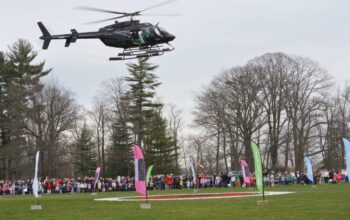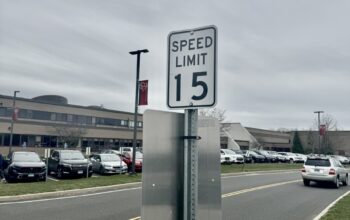Joelle Anselmo, Reporter
@janselmoCourant

Since fall of 2015, the faculty has been talking about making changes to the library, in the form of a space where could work together on assignments. It was not until May of 2016 that specific plans towards creating the Collaboration Room were established. Faculty members such as Scott Barnett, Michelle Luhtala, John Perna, Matthew Salvestrini, Jackie Whiting, and Robert Willaby have been working to organize a space that allows the most flexibility for students to learn together. The participants set a goal for the ColaB to be open by September 19.
Michelle Luhtala, the library department chair, reflects that the library remodeling project was initiated by the Bring Your Own Device program. “The kids are coming in with their own devices and have no interest in using the school equipment. It’s really shifted a lot and, though we expected it, we just didn’t know how fast it was going to change,” she said. “Whatever use we get out of the Collaboration Room will be a model of the steps we will take in the future for other areas in the library.”

According to Ms. Luhtala, the research process went on for weeks before any plans or budget considerations were made. “I went around for about three weeks asking students, teachers, and the faculty what changes they wanted to see,” she said. “Our goal was to have the most flexible space possible within that 25 x 25 foot room.”
Jackie Whiting, the library media specialist, believes that students can utilize the ColaB to advance their learning. Student can either project their devices onto the smartboards or write it by hand on the whiteboards or adjustable tables. “It’s a cool way to allow students and teachers to approach instruction and assessment because the space becomes flexible to people’s needs in that moment,” she said. “If a group needs to project something that they cannot see on a little screen or use a whiteboard to brainstorm ideas, they can do that.”

Ms. Luhtala describes her vision for the future reconstruction of the library and how the ColaB can be a helpful tool that has a positive impact on students’ learning. “My hope is that it’s so busy that people fight for it. I don’t want it to just become a classroom for librarian instruction, but that kids sign up for it and use it,” she said. “My dream is that kids really use it for school, independent, or personal work.”
Director of Digital Learning, Matthew Salvestrini, states what improvements can be made in the future to further develop the library. “First of all, we have another lab across the hallway. The idea of doing one lab this past year was to experiment a little bit, and then learn from that,” he said. “We will have a year’s worth of teaching and learning in that space with some of the desks, projectors and the whiteboards that we picked, learn lessons from that, and then look at Lab A.”
Principal, Bill Egan, has high hopes for how the ColaB will change the school climate. “It’s an opportunity to have a spot where kids can come in and do things in a collaborative way,” he said. “Realistically, the old room wasn’t set up for that. This will be more of an interactive space that they can really use and utilize.”



